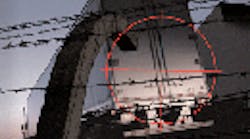An ongoing survey of cargo theft trends finds that cargo thieves may be getting bolder and more sophisticated, even to targeting carrier facilities more frequently. On top of that, a spike in violence during reported cargo thefts in the third quarter of this year is another cause for concern.
According to the Supply Chain ISAC Report of Cargo Theft Activity for the third quarter of 2009 – a survey compiled and issued by LoJack Supply Chain Integrity (LoJack SCI) – carrier terminals and yards continued to be the number one area where thefts take place. That suggest thieves are becoming more emboldened – seeking out vehicles and their cargo even when they are secured with fencing and surveillance systems – and targeting very specific loads vs. simply pursuing “opportunistic” thefts, the company said.
“That thieves targeted carrier facilities this quarter more so than in the past indicates they are getting more sophisticated and more organized,” Robert Furtado, president & CEO of LoJack SCI, told FleetOwner. “It takes more planning and more people to steal cargo from a carrier’s terminal. It also means they are targeting specific goods, rather than taking a ‘shotgun’ approach by stealing a load at random from a truckstop.”
According to LoJack SCI’s survey, compiled from incidents reported by its 679 member companies, carrier facilities and truckstops were targets of cargo thefts almost equally in the third quarter , with 32 vs. 30 incidents reported for the months of July, August and September, respectively,
Thefts from “unsecured areas” including truckstops, parking lots (23), streets/highways (19) and other (1) combined for a total of 73 incidents or 42% of the total thefts for the third-quarter incidents. Facilities, including warehouses and store locations, found themselves targeted for theft activity, with nine and six cargo thefts reported, respectively.
As noted above, cargo thieves have not been deterred from stealing vehicles and cargo secured with fencing and surveillance systems. What’s more, several intelligence reports from the group’s members indicate suspicious activity by unknown suspects using laptops and surveillance equipment to survey and document fortified facilities and yards.
LoJack SCI also said that it’s seeing an increase in the amount of violence associated with cargo and commercial vehicle thefts. Seven violent cargo robberies were reported in the third quarter, with six identified on streets/highway locations and one at a truckstop. Protocols for the safety and security of vehicles, cargo and drivers should be re-evaluated by organizations based on this disturbing trend, the company cautioned.
Food returned to the number-one slot as the most frequently targeted commodity after having fallen to the third position in the second-quarter findings, said LoJack SCI. Consumer electronics took the second spot this quarter.
“Our take on this rapid change is that food is plentiful and it’s almost impossible to trace,” Furtado explained. “If you are well organized, you can definitely distribute a load of stolen food. For example, we’re seeing farmer’s markets turning into an ideal place to move stolen food items in bulk.”
Furtado noted, though, that food thefts can prove a costly burden for shippers and carriers to bear. “Food isn’t like cell phones or televisions. If you recover a stolen load of TVs – or even a partial load – you can in many cases return those products to sale,” he pointed out.
“With food, you can’t because you don’t know if it’s been tainted, especially by improper handling,” Furtado added. “Frozen chicken, for example, must be kept at a certain temperature to remain safe for consumption, Thieves don’t care about that – they sell what they can and leave the rest to be destroyed.”




